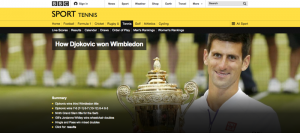If you regularly read Stream Companies’ blog, you know by now that link building is one of the most important components of SEO. Google views backlinks as votes of confidence for your website, and the more high-quality links that point to your website, the better your site will rank in search results.
We’ve spent a lot of time on this blog discussing why link building is important, so now we’re going to turn to the how of link building. How do you develop an effective link building strategy?
If you’re going to begin a link building campaign, it’s important to remember that outreach is key. Read on to learn about the four major steps in organizing and executing outreach to create a successful link building plan.
Step 1: Select Your Linkable Asset
Before you begin your outreach, you need to decide what you’re going to pitch. Do you have a blog post that you believe will delight readers? An eye-catching infographic? Original research full of new and interesting information? All of these are examples of linkable assets, or types of content that people will either naturally link to or link to if you ask
It doesn’t matter what type of content you choose to pitch, as long as you believe there are people who will want to link to it. Which bring us to…
Step 2: Research Your Outreach Targets
Now that you’ve selected your linkable asset, it’s time to decide where to pitch it. When researching websites to see if they’d be good outreach targets, keep the following criteria in mind:
- Will this content be useful to this website’s readers?
- Does this content make sense on this website?
- What is this website’s domain authority?
- Is this website up-to-date?
If you find a website that meets all of these conditions, add it to your list of outreach targets. I’ve found that it helps to keep an Excel spreadsheet of my outreach targets for each link building campaign. I include the target’s website URL, website name, contact person, and contact person’s email address or phone number. Link building campaigns involve juggling a lot of information, so it’s important to stay organized.
Step 3: Craft Your Pitch Email
Each pitch email you send should be personalized to your outreach target, but creating a basic template to follow does save time.
Here’s an example of an email template I use when I pitch infographics:
Hi [Name],
I recently came across your wonderful blog and wanted to reach out.
I work with [Client’s Name], and we recently created an infographic about [describe the subject]. I think [Blog’s Name] readers would really enjoy the graphic and find it informative, so I thought you might like to post it on your blog!
Let me know if you want to check it out J
Like I said, it’s important to personalize these emails as much as possible, but having a general template helps speed up the outreach process. You should also keep your emails short and sweet—people aren’t going to take the time to read a long email from someone they don’t know.
Finally, include a call to action at the end of your email. This increases the odds that your outreach targets will respond to you.
Step 4: Outreach Follow-Up
I can’t overstate the importance of sending follow-up emails after your initial outreach. Many times outreach prospects will see your original email and forget to respond or they’ll overlook your email in their inbox. Following up is a good way to prompt a response from your outreach target.
Here’s an example of a follow-up email template I use for infographics:
Hi [Name],
I wanted to follow up to make sure you received my email about [Client’s] infographic.
In case you didn’t, [Client Name] recently created an infographic about [subject], and I thought you might like to post it on [Blog’s Name] as a resource for your readers.
Please confirm that you’ve received my emails, and let me know if you want to see the infographic!
Again, this email is short and to the point, and it includes two calls to action at the end. If your outreach prospect still doesn’t respond, let it go. Sending more than two unsolicited emails can seem spammy.
Conclusion
Link building is difficult, there’s no doubt about that. But when you take the time to do your research and create a strategy, your link building efforts will be much more successful.
Every SEO strategist has a link building strategy that works best for them, so don’t be afraid of some trial and error. It will take some time to find your link building sweet spot, but if you begin by following the four steps listed above, you’ll be well on your way to becoming a link building machine!
Digital & Social Articles on Business 2 Community
(19)








